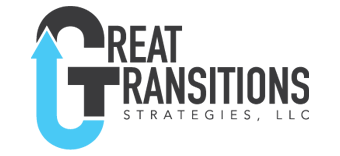“She does such a good job in front of the entire organization. She is confident, poised, and calm, particularly when we are in the midst of a crisis. I have never seen her lose her cool. We are lucky to have her running the company.”
Who is an individual who exudes Executive Presence (EP)? Mentally tick off the traits that influence your opinion. Based on those traits, what is EP?
Executive Presence, is often hard to define. However, we know when we see it.
For me EP is how well a person fits the perception of a particular position. I expect the CEO of an organization to represent the organization and the position in a specific manner. I also expect the leader of my team to behave and act a certain way. If they do not, it affects my opinion of them and the organization.
The essential question is; Do you have to look the part in order to land the part? The short answer is yes. Looking and acting the part of a leader is as important and sometimes more important than the other skills you bring to the table. So, what are the components of executive presence and can they be developed?
Using data from and an extensive survey conducted by COQUAL, formerly “The Center for Talent Innovation”, executive presence relies on three pillars; Gravitas, Communication, and Appearance. And yes, they can be developed.
Let’s take a look at each one. While we look at each pillar consider three people; 1) someone you believe is a model of EP, 2) yourself, and 3) someone you are leading and mentoring. Also consider how the pillars are integrated.
Gravitas
The confidence, competence, and poise a leader radiates, particularly when under stress. It’s that simple. Leaders are critically judged on how they respond in a crisis. A question I use to evaluate this pillar is; “In a crisis do people move towards this individual or away?”
What is your evaluation of the person who is a model of EP, yourself, and your mentee. What is working in the area of gravitas? What is not working? What needs to change?
Communication Skills
Excellent communication skills infer being able to connect with and influence others in a multitude of settings. “Commanding the room” is a common descriptor. Sometimes the room is a large auditorium. Other times it is in the field, an office, board room, or a lunch meeting. Sometimes it is virtual, one-on-one, and other times one-on-many, formal and informal.
Evaluate your three individuals and consider the elements of communications. How well do they connect with their audience? What is it that allows the connection? Are they talkers or listeners? Do they spend time explaining data and details or relating emotions and empathy?
Appearance
Does appearance really matter?
Science has shown that, based on appearance, we will unconsciously make a decision on trust within a quarter of a second.
Yes, appearance matters. But what parts of appearance?
The study showed that the important elements of appearance are not good looks. Grooming, polish, and looking fit are what matters.
First, have the right clothes properly tailored to your body type. Second, be put together; with haircuts, facial hair, and makeup for women. Third, appearing fit means being able to have the fitness to handle the stresses of the position.
If you do not look the part, it may be an automatic disqualifier. The good news; meeting these criteria is not difficult. You can do something today to improve your appearance tomorrow. Hence you improve your EP.
Make your final evaluation and draw some conclusions. How do you fit the criteria of having EP. How about the subordinate you are mentoring?
What are you going to do about it?
Summary
The three pillars do not stand alone, they are integrated with Gravitas the most important. Demonstrating confidence, competence, poise, and credibility are required. How you project your image is affected by how you communicate and look.
Be deliberate and project your image. Create it, refine it, and maintain it.



